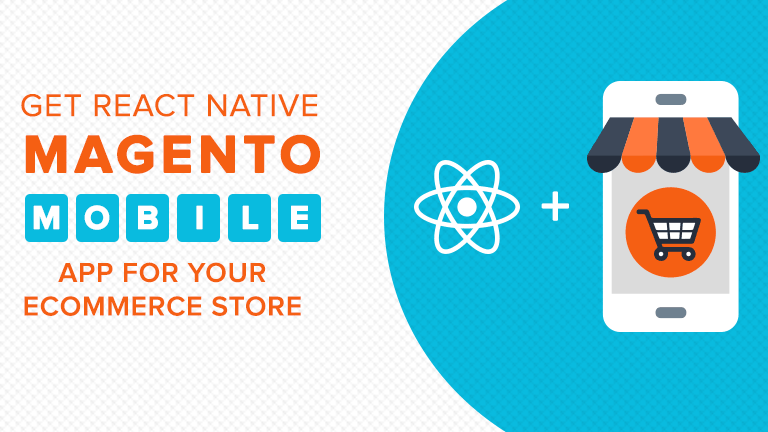React Native is the successor of React. It is a JavaScript code library created by Facebook and Instagram. The platform aids programmers reuse code across the web as well as on mobile. Apps developed using React Native are real mobile apps. The platform employs the identical UI building blocks as conventional Android as well as iOS apps. For your information, Magento is a powerful and highly popular technology to develop e-commerce sites.
In brief, React Native is a leading framework for mobile development enabling the building of native mobile applications.
Integrate React Native with Magento
Integrating React Native with Magento for a mobile app can be a great choice for an eCommerce store. It allows for a native-like user experience while leveraging Magento’s robust backend for managing products, orders, and customer data. Here’s a general outline of how you can go about it:
- Setup Magento Backend:
- Ensure your Magento store is set up and running smoothly with all necessary products, categories, and configurations.
- Install React Native:
- Set up a React Native development environment on your machine if you haven’t already. You can use tools like Expo or React Native CLI for this purpose.
- Choose a React Native Template:
- Select a suitable React Native template for eCommerce, such as React Native WooCommerce, React Native Magento, or a custom template that fits your requirements.
- Configure API Access:
- Magento provides REST APIs that allow you to access store data from external applications. Configure API access in your Magento admin panel and generate API credentials (consumer key, consumer secret, access token, access token secret) for authentication.
- Integrate API Calls:
- Use Axios or Fetch API in your React Native app to make API calls to Magento. You can fetch product listings, customer details, cart information, and process orders through these API endpoints.
- Implement Features:
- Implement essential features like product browsing, search, product details, cart management, checkout, user authentication, and order tracking within your React Native app.
- Optimize Performance:
- Optimize the app’s performance by caching data where possible, implementing lazy loading for images and content, and optimizing API requests to minimize latency.
- Test and Debug:
- Thoroughly test the app on various devices and screen sizes to ensure compatibility and responsiveness. Debug any issues that arise during testing.
- Publish the App:
- Once testing is complete and the app is ready for production, publish it to app stores like Google Play Store and Apple App Store following their respective guidelines and policies.
- Monitor and Update:
- Monitor app performance, user feedback, and analytics regularly. Update the app with new features, bug fixes, and security patches as needed to provide a seamless shopping experience for your customers.
There are numerous benefits of having a React Native Magento mobile app for your e-commerce store. Let’s take a look at some of them.
-
- One advantage of React Native is that there exist negligible differences between native apps and apps fashioned employing React Native.
-
- React Native encourages programmers to employ the components which behave closest to the mobile platform’s native units.
-
- The technology permits coders to leverage JavaScript to fashion mobile apps for iOS as well as Android that feel, look as well as are native.
-
- The technology is the fully open source. Hence there is a significant developer community adding extra features, taking care of bugs and aiding another folk.
-
- The code has to write only a single time. Then it is ready to be launched on Android, iOS and various other mobile platforms.
-
- The base of mobile users is big as well as growing fast. A Magento mobile app will reach out to many new customers who are interested in purchasing products and/or services from your e-commerce store.
-
- You get fast loading pages which enable customer retention and ramp up sales.
-
- Push notifications are made possible which inform prospective and existing customers about discounts, sales as well as the arrival of new items.
-
- React Native have counterparts for all the components in iOS and Android. Hence the look and feel are native.
-
- The advantage to React Native developers is that they don’t have the re-compile the whole rebuilt application whenever a change is made.
-
- You get the best features and advantages of web apps as well as native apps. For example, the time taken to develop a React Native App is same as for a typical web app.
-
- The platform lets developer link third-party plugins with native modules.
To sum up, React Native provides a native app’s impressive performance as well as the speed and ease of development of a regular web app. People with knowledge of JavaScript can easily learn and master this upcoming platform. Though the technology is relatively new its evolving as well as maturing at a fast rate.



